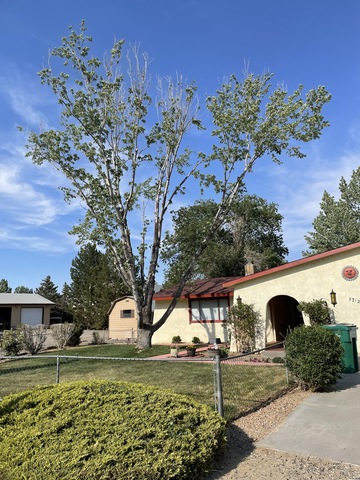
While riding a bicycle with a small weather station attached to it in 2016, Carly Ziter of Concordia University gathered some interesting facts about trees in city neighborhoods. She rode her bike around Madison, Wisconsin to collect a massive amount of data.
Those facts were carefully analyzed and studied by a team working with Ziter, and they came up with an interesting conclusion. They discovered that if trees cover 40 percent of a city neighborhood, those trees will provide maximum cooling benefits.
The study was published in the journal, Proceedings of the National Academy of Sciences. An article about the study written by Matt Hickman appeared in an April 1, 2019 Treehugger newsletter. Another one by Lloyd Alter appeared in the July 25, 2022 Treehugger newsletter. If you would like to know more about trees and many interesting facts about nature and gardens, go to www.treehugger.com and check out the interesting website. It's full of valuable information.
I can imagine Ziter riding around on her bicycle with a weather station as she collected all that data. She estimates she rode 400 to 500 miles around Madison, covering ten areas of the city many times during different hours of the day. That data showed that there are great economic benefits to having many areas in the city with a 40 percent tree coverage. The costs of removing pollution and the energy it takes to run air conditioners and other cooling devices are reduced. That can save many millions of dollars.
The study pointed out that planting trees just anywhere isn't always the best answer. Instead, Ziter suggested looking at areas that need a few more trees to help them reach the 40 percent coverage.
The trees promote cooling by providing shade and by a process called evapotranspiration. That process happens when the rays of the sun shine on the canopies of trees. It helps water to evaporate from leaves and cool them down. As a result, it takes less energy to warm the air.
I'm not sure what percent of tree coverage is in my city neighborhood, but I'm pretty sure it's less than 40 percent. My city is one of those that might benefit from having more trees. If trees cool the air, then people wouldn't have to use up quite so much electricity running air conditioners. If that would shave off even a few dollars from my electricity bill, it would be worth it!
